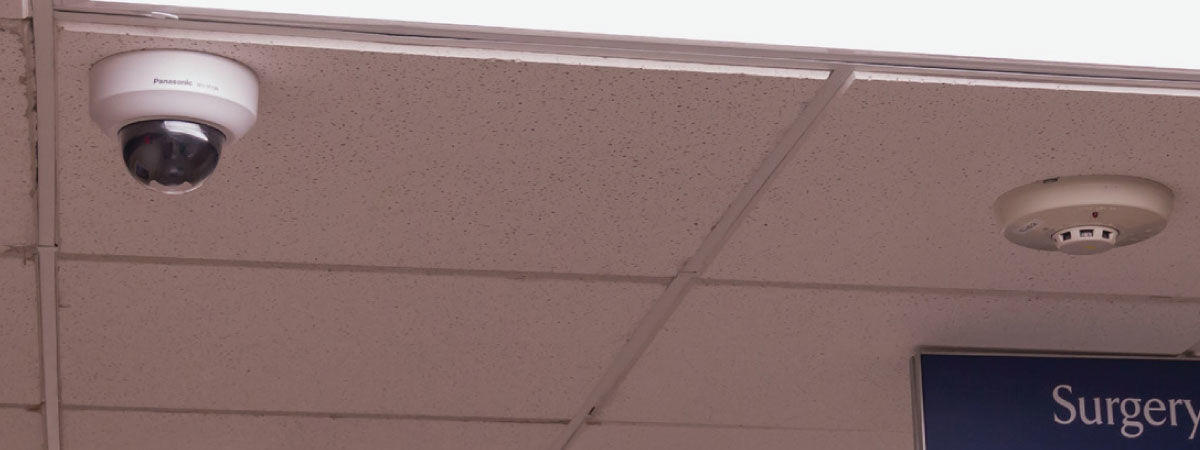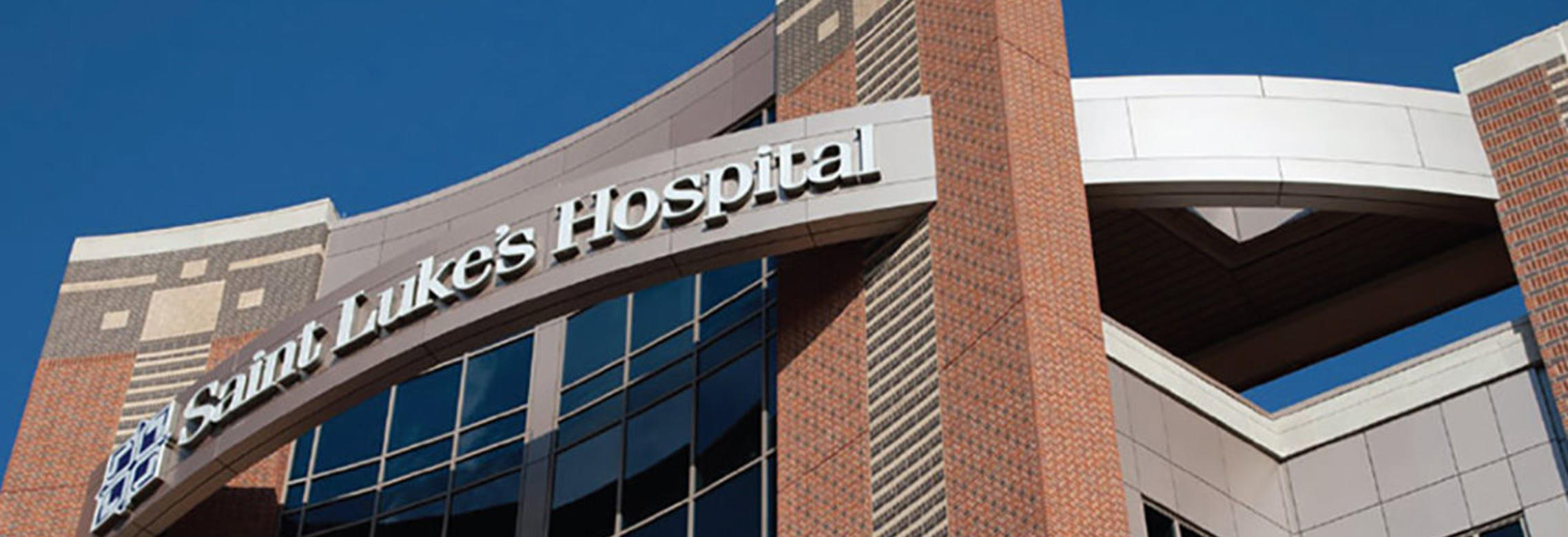Wayne Memorial Hospital

Busy medical campus relies on a variety of i-Pro cameras to improve positive identification and mitigate liability claims
Wayne Memorial Hospital, Goldsboro, N.C., an affiliate of Wayne Health Corp., is an advanced medical care facility with a network of 14 off-campus practices. Celebrating more than 100 years in the community, it serves patients from some nine surrounding cities and other locations across Wayne County, and is home to many distinguished physicians, advanced technologies and innovative treatments.
The local independent hospital, with 250-plus beds and more than 60 physicians, is growing, and experiencing many of the same security challenges other healthcare institutions across the nation encounter, such as increased potential for criminal activity and liability. But overall, according to Police Chief Michael Wightman, the goal of the video surveillance upgrade program is to enhance security and safety campus wide.
Challenges
Wayne Memorial is a sprawling hospital campus that resides in resides in one of the highest crime rate locations of Goldsboro, North Carolina. Home to many distinguished physicians, advanced technologies and innovative treatments, the fast growing facility is comprised of 14 off-campus practices, which means high traffic in and around the campus – and a higher potential for criminal activity and liability. They needed a comprehensive video surveillance solution to enhance security and safety campus wide.
Solutions
The hospital chose Panasonic surveillance systems for their superb image quality and reliability and the on-site local support and ongoing maintenance the company would readily provide. Wayne Memorial now has 330 cameras across the hospital campus and outpatient buildings that feed into 15 flat screen monitors at the police command center - letting them track activity throughout the facility. The hospital also has four Panasonic WJ-ND400 recorders and one Panasonic AJ-HD316 analog recorder to provide video evidence.
Results
The deterrent factor of visible video surveillance cameras throughout the campus has resulted in the facility boasting the lowest crime rates of all hospitals in the area. Says Wayne County Police Chief Wightman. “We’ve used the footage for criminal cases, like theft or assault and have been able to prosecute successfully in court. The cameras have also caught vehicle and parking lot accidents and solved cases.”
Safety, security and litigation
“We want to track people throughout the hospital, making sure areas are secured and people are protected,” he said. While Wayne Memorial Hospital resides in one of the highest crime rate locations of Goldsboro, Chief Wightman is convinced the deterrent factor of visible video surveillance cameras throughout the campus has resulted in the facility boasting the lowest crime rates of all hospitals in the area.
“People know they are being watched in and around the hospital,” he continued. “We also have traffic mishaps and incidents in the parking areas, and can pull up associated video to see what transpired and ascertain damage to property, which we can easily prove or disprove with the video. But most of all, our employees and on-site, sworn police agency senior management at the hospital feel much safer than prior to 2002 when at best we had about 25 aging analog cameras.”
Ongoing program replaces analog with IP
Assisted by systems integrator North Carolina Sound of Goldsboro, the hospital began a multi-phase security upgrade process in 2011. At that time, the hospital had a mix of approximately 100 analog cameras from a variety of manufacturers. The existing police office, a 10- by 10-foot space, housed the surveillance command center, and used multiplexers to switch out 16 cameras at a time for viewing.
In 2013, the hospital built a larger police department facility with central command center and looked to expand video surveillance further. Chris Tyndall, area sales manager for North Carolina Sound, recommended Panasonic cameras for their superb image quality and reliability and the on-site local support and ongoing maintenance the company would readily provide.
Today, Wayne Memorial Hospital has about 330 cameras across the hospital campus and outpatient buildings that feed into 15 flat screen monitors at the police command center. The hospital also has four Panasonic WJ-ND400 recorders and one Panasonic AJ-HD316 analog recorder. It uses seven encoders to convert analog signals to digital, but the current mix of cameras is approximately 85 percent IP and 15 percent analog.
Tyndall and North Carolina Sound’s Owner Gary Hinton agree that one of the drivers of the transition to IP for the hospital was the ability to obtain better images. “With the previous analog system, identifying anyone clearly was a challenge and the images were fuzzy and ineffective,” says Tyndall. “Since the hospital began the transition to IP with Panasonic, the difference in image clarity and quality has been outstanding and we can seamlessly track activity throughout the facility.”
Not only do cameras serve as a deterrent because of their visibility, but footage has assisted in solving numerous cases, says Chief Wightman. “We’ve used the footage for criminal cases, like theft or assault and have been able to prosecute successfully in court. The cameras have also caught vehicle and parking lot accidents and solved cases.”
Video as admissible evidence
In one instance a patient was released and transported out of the hospital in a wheelchair waiting for transportation home. The patient stood up to get into a vehicle, slipped off the curb and broke her ankle. The security cameras showed that the staff followed all protocols, including locking the wheels of the wheelchair, protecting the hospital from a possible slip and fall negligence claim. In addition, leveraging the cameras hospital police were able to apprehend an individual who was intoxicated and hit three cars in the parking lot. As the offender entered the hospital, security was there to meet her and hold her responsible for the damage.
Cameras blanket nearly every part of the hospital’s public areas. They are also used in the pediatric wing and in labor and delivery areas. “The cameras have been a tremendous benefit to the overall safety and security of the entire hospital campus,” Wightman adds.
The hospital is currently using wireless cameras in the parking lots to mitigate negligence claims, theft, vehicle damage and breaking and entering into cars. Some 90 percent of deployed cameras are i-Pro SmartHD Super Dynamic Weather Resistant HD Dome Network Cameras—models WV-SW395, which features 720p HD images at up to 30fps and 1.3 Megapixel double speed MOS Sensor, and WV-SFN311 Super Dynamic HD Dome Network Cameras, with 720p HD images at up to 60fps and Super Chroma Compensation for sharp color reproduction in low-light illumination.
Most of cameras are positioned in hallways and building exteriors/parking lots as well as common areas, including the Behavioral Health Center. Cameras also cover the parking areas of the outpatient buildings on the hospital’s grounds. Wayne Memorial Hospital has also deployed i-PRO SmartHD WV-SW355 Super Dynamic HD Vandal Resistant Fixed Dome Network Cameras, with 720p HD images at up to 30fps and Face Super Dynamic Range technology to ensure clear face imaging in the breezeway and monitoring entrances/exits to the Emergency Room Department.
In addition, an i-PRO SmartHD WV-SF438 360° Super Dynamic Indoor Network Dome Camera is used in the hospital’s pharmacy to monitor narcotics handling and dispensing. It provides flexible viewing modes, 360 degrees of coverage and 1080p Full HD images at up to 30fps.
The hospital is also exploring the further use of Panasonic’s WV-ASF900 FacePro Facial Search and Recognition System, a server-based software program that provides advanced age and gender analytics reporting as well as the ability to set flexible alarm triggers on matches using live i-PRO cameras. The Facial Recognition System would be used at the three main entrances to the hospital, placed so as to help police and security identify known criminals entering the hospital. According to Wightman, the hospital on average arrests 35 to 40 individuals per month from warrants issued by the county and from running a criminal history on suspicious persons.
Comprehensive command and control
Wayne Health also leverages the WV-ASM970 software and PMPU1000 management server to manage individual cameras and the entire system, as well as the WV-CU950 surveillance controller for integrated joystick and keyboard camera control. All cameras feeds are brought back through the management server to displays in the command center. Each PC utilizes the ASM970 software to enable the police to move cameras around and change monitors from multi-view to single-camera view for tracking an individuals’ movements throughout the hospital or broader campus. To better manage the hundreds of cameras deployed, Wayne Health developed a CAD drawing of the hospital and parking lots that provides a detailed map of every floor in the hospital and the parking areas. If there is an incident on a particular floor, they can quickly determine exactly which camera they need to focus on, versus having to search through hundreds of cameras to determine the right one.
For example, during a recent incident when there was only one police officer on duty, the officer recognized a person of interest in the parking lot and asked Chris Tyndall of North Carolina Sound, who happened to be on site at the time, to track the individual through the campus while the police officer checked to see if he had warrants. Tyndall was able to quickly click on the cameras he needed to follow the individual through the building. This person did in fact have warrants and was arrested without incident.
An ongoing process that continues, Wightman says the transition and upgrade to IP has been seamless. “Working with North Carolina Sound and drawing on their expertise we’ve been able to devise a manageable plan to upgrade to all IP in the near future, and it’s been a smooth process. Panasonic’s cameras and recorders have worked very well for us, have been easy to install and have helped us accomplish wonderful things to protect the hospital, patients and employees,” Wightman adds.
